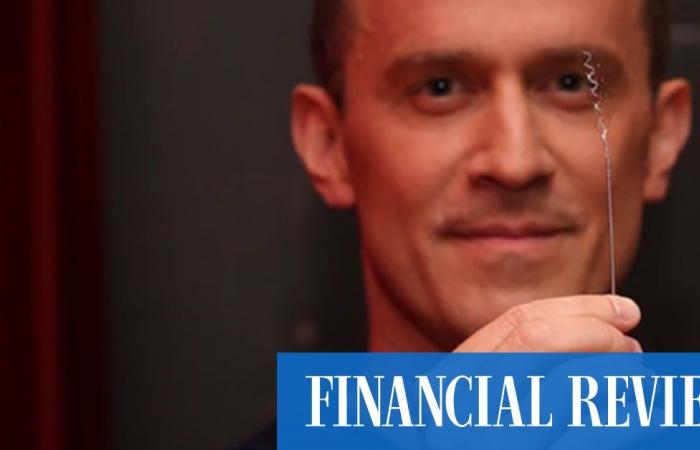While a muscle can only emit one switch, a brain can potentially emit any number.
The technology was developed by researchers from Melbourne University, Royal Melbourne Hospital, Florey Institute, Monash University and a commercial partner, Synchron.
“This is the first fully implantable computer interface for the brain that goes home with the patient and is plug-and-play,” said Associate Professor Thomas Oxley, co-director of the Vascular Bionics Laboratory at Melbourne University and executive director of Synchronous.
“The prosthesis, a fine wire stent, is implanted through a blood vessel on the open brain without surgery. Over time, it gets absorbed into the walls of the blood vessels, just like a tattoo is absorbed into the skin, “said Associate Professor Oxley.
“Previous demonstrations of the technology have been academic, in laboratory settings, with large equipment, or with engineers to make it work.
“They were like the pacemakers of the 1970s, next to which were refrigerator-sized devices. While they provided proof of principle, they were not commercially or clinically relevant technologies.
“This technology replaces the mouse and keyboard and uses an eye tracker for cursor navigation.”
The tiny stent, called a stentrode, is carried to the brain via the blood vessels that form natural highways in the head.
It’s tender and covered with tiny electrodes. It’s located in the part of the brain responsible for movement called the motor cortex.
Three months to master
There it picks up thoughts that are communicated via the brain as electrical signals. These signals are sent via a wire to an internal antenna in the chest just under the skin.
It transmits the signals wirelessly to a detachable receiver, which sits above on the chest and is fed into the computer.
In the operating room, the implantation process takes up to two hours and uses a widely used technique known as neurointerventional surgery.
However, it takes much longer for patients to master the technology and requires a combination of machine and brain learning.
Within three months of the implantation, both men were using their computers unsupervised at home.
The study’s principal investigator, Professor Peter Mitchell, head of Neurointervention Services at Royal Melbourne, said the results showed the device could be safely implanted.
This was the first time this type of surgery had been performed and it went better than expected.
“In every operation there were differences depending on the patient’s anatomy. In both cases, however, patients were able to leave the hospital a few days later, ”said Professor Mitchell.
Last month, Synchron was named a “breakthrough” by the US Food and Drug Administration. This status is reserved for innovative solutions that address irreversibly debilitating conditions.
The company has filed more than 50 patents, raised $ 25 million ($ 35 million) and is starting a new round of funding.
It has received grants from the US Department of Defense and was named by President Barack Obama in 2016 as a technology with the potential to “change the lives of our wounded and disabled warriors.”
The team recently received $ 1.48 million from the federal government to expand the process to NSW and Queensland. The company also received $ 1 million from the Medical Research Future Fund to help drive its commercialization.
These were the details of the news The Australian breakthrough enables bluetooth from the brain for this day. We hope that we have succeeded by giving you the full details and information. To follow all our news, you can subscribe to the alerts system or to one of our different systems to provide you with all that is new.
It is also worth noting that the original news has been published and is available at de24.news and the editorial team at AlKhaleej Today has confirmed it and it has been modified, and it may have been completely transferred or quoted from it and you can read and follow this news from its main source.

